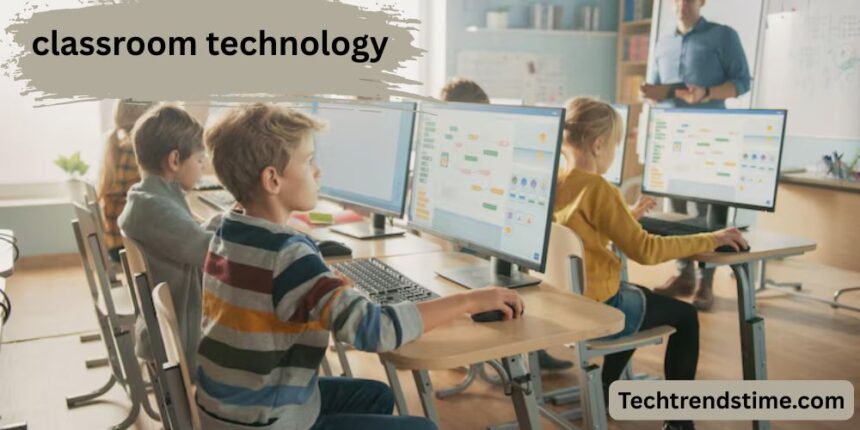Classroom technology refers to the digital tools and systems used to facilitate learning in an educational setting. Think of it as the smart toolbox teachers use to make lessons more interactive, accessible, and engaging. From smartboards to tablets, and even virtual reality headsets—classroom tech is turning the traditional blackboard into something out of a sci-fi movie. Let’s be real—kids today are digital natives. Expecting them to sit through hour-long lectures with nothing but a textbook is like asking a fish to ride a bicycle. Integrating technology into classrooms not only speaks their language but also prepares them for a world where tech fluency is essential.
Evolution of Technology in the Classroom
Remember chalkboards? Those dusty, squeaky black surfaces that covered teachers in white clouds? Fast forward to today and we’ve got smartboards that can play videos, record notes, and connect to the internet. We’ve come a long way—and it’s not just about looking cool. It’s about teaching smarter. The journey began with overhead projectors, followed by the introduction of desktop computers in the ’90s. Fast internet paved the way for online resources and eLearning platforms. Today, we’re witnessing AI tutors and VR classrooms. The pace is rapid—and it’s only accelerating.
Types of Classroom Technology
These are touchscreen boards that allow teachers and students to write, draw, and interact with digital content in real time. Say goodbye to boring diagrams—hello to dynamic lessons that literally move with the touch of a finger. Clickers, polling tools, and quiz platforms like Kahoot! let teachers assess understanding instantly. It turns passive learning into a game show, and who doesn’t like a little competition? Platforms like Google Classroom and Canvas help manage assignments, grades, and communications—all in one place. It’s like having a virtual backpack that never gets lost. iPads and Android tablets let students access resources, create content, and collaborate seamlessly. These tools aren’t just for watching YouTube—they’re powerful learning aids when used correctly. Want to walk through ancient Rome or dissect a frog without the smell? AR and VR make it possible. These immersive tools bring textbook content to life in ways that capture imagination like never before.
Benefits of Classroom Technology
Tech allows for customization—students can learn at their own pace, revisit difficult topics, and even get content tailored to their style. No more one-size-fits-all. Gamified learning, interactive quizzes, and multimedia presentations make lessons way more fun. When students enjoy the process, they retain more—simple as that. Tools like Google Docs, Padlet, and Zoom make group work a breeze. Even shy students find their voice through discussion boards and collaborative apps. Assistive technologies like text-to-speech, subtitles, and translation tools ensure everyone gets a seat at the table—regardless of language, learning style, or disability.
Challenges in Integrating Technology
Let’s face it—tech isn’t cheap. Schools often struggle to afford the latest gadgets, especially in underserved communities. Grants and government programs can help, but the gap remains a concern. Not every teacher grew up with tech, and diving into digital tools can be intimidating. Training and ongoing support are crucial to bridge this gap. Not all students have reliable internet or personal devices at home. This inequality affects homework, research, and overall learning experience. Schools must address this to ensure fairness.
The Role of Teachers in a Tech-Enhanced Classroom
In a tech-savvy classroom, the teacher shifts from knowledge-giver to guide. They help students navigate digital resources, ask better questions, and think critically. Tech evolves constantly. Teachers must stay updated through workshops, certifications, and peer learning. Lifelong learning isn’t just for students anymore.
Student Impact: How Learners Benefit
Tech tools provide instant grades and feedback. Students know right away what they got right—and what they need to improve. It’s like having a personal tutor in your pocket. With online platforms, learning doesn’t stop when the bell rings. Students can review lessons, watch videos, or participate in discussions anytime, anywhere.
The Future of Classroom Technology
Imagine an AI that knows your strengths, weaknesses, and how you learn best. Tools like ChatGPT and adaptive learning platforms are making this a reality. COVID-19 accelerated remote education—and it’s here to stay. Hybrid models offer flexibility, reduce absenteeism, and expand learning opportunities far beyond four walls.
FAQs About classroom technology
What are examples of classroom technology?
Smartboards, tablets, LMS platforms, student response systems, VR headsets, and educational apps are all examples of classroom technology.
How does technology improve student performance?
It enables personalized learning, instant feedback, and higher engagement—leading to better understanding and retention of material.
What is the biggest disadvantage of classroom technology?
Access inequality. Not all students have the same access to devices or internet connectivity, which can widen the achievement gap.
Can technology replace traditional teaching?
No. It’s a tool, not a replacement. Great teaching still needs human empathy, adaptability, and relationship-building.
How can schools prepare for tech integration?
By investing in infrastructure, providing teacher training, and ensuring equitable access for all students.
Conclusion
Classroom technology isn’t just a trend—it’s a transformation. From chalkboards to smartboards, from passive learning to personalized education, tech is reshaping the way we teach and learn. Sure, there are hurdles—but the potential far outweighs the challenges. The future of education is bright, digital, and just a click away.


